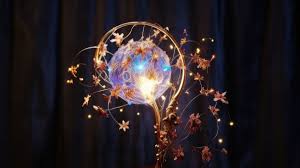On a warm afternoon in a bustling city market, I watched a woman moving with an effortless grace that turned heads everywhere she went. Her confidence was unmistakable, and her unique physique seemed like a work of art. People whispered, some in admiration, others in curiosity. It was then that I heard about the unusual award n.13: extreme gluteal proportions in African woman. This recognition highlights not only extraordinary physical features but also celebrates diversity and body variation that defy conventional beauty standards.
Understanding the Unusual Award N.13
This award is part of a broader effort to acknowledge rare and remarkable physical characteristics across populations. While many focus on conventional beauty ideals, awards like unusual award n.13 aim to challenge and broaden our understanding of what is considered extraordinary.
The recognition centers around individuals with exceptional physical traits, particularly those that are naturally occurring and not artificially enhanced. In this case, it celebrates African women with notably extreme gluteal proportions—an impressive feat that illustrates the incredible diversity inherent in human bodies.
The Science Behind Gluteal Proportions
Genetics and Evolution
African populations are renowned for their diverse range of body types, and genetics play a significant role. Certain genetic factors influence fat distribution, muscle development, and overall body shape.
The gluteal muscles, which include the gluteus maximus, medius, and minimus, are among the largest muscles in the body. Their size and shape are affected by genetics but can also be influenced by lifestyle and physical activity patterns.
In some African communities, a focus on physical activity, such as dancing or labor-intensive work, promotes muscle development in the hips and buttocks. Over generations, such cultural and environmental factors contribute to the prevalence of individuals with prominent gluteal features.
Cultural Significance
In many African cultures, body shape, including prominent hips and buttocks, is associated with beauty, fertility, and social status. This cultural appreciation often encourages practices that accentuate these features, further contributing to the natural development of such traits.
The celebration of extreme gluteal proportions in certain communities has helped challenge Western-centric beauty ideals that often favor slim or less curvaceous figures. Recognizing such natural diversity emphasizes the importance of cultural context in defining beauty.
Celebrating Diversity Through Awards
The unusual award n.13: extreme gluteal proportions in african woman serves as a reminder that beauty is multi-faceted. While mainstream media may often highlight a narrow standard, awards like this show appreciation for genuine, natural variation.
Such awards promote body positivity and encourage individuals to embrace their unique features without shame or stereotypes. They also raise awareness about the importance of respecting different cultural standards and values.
Impact on Society and Media
Recognition through awards can influence societal perceptions positively. It encourages media outlets to showcase diverse body types and challenge outdated stereotypes. Moreover, it fosters a healthier attitude towards body image across different cultures.
By celebrating figures with extraordinary features, we foster a more inclusive environment where all body types are valued and respected.
Myth Busting and Facts About Body Proportions
Many misconceptions surround body proportions, often fueled by unrealistic images in media. It’s essential to understand that extreme gluteal proportions are often natural and genetically influenced, not necessarily linked to cosmetic surgeries or artificial enhancements.
Furthermore, a focus solely on physical appearance overlooks the significance of health, confidence, and cultural identity. Recognizing people for their unique traits can help break down stereotypes and promote acceptance.
Conclusion
The story of the woman I saw in the market and the celebration of the unusual award n.13: extreme gluteal proportions in african woman highlight the beauty of human diversity. These features are a testament to what nature can produce under different genetic and cultural conditions. Recognizing and honoring such uniqueness not only challenges conventional standards but also promotes a more inclusive understanding of beauty.
As we learn more about body diversity and celebrate these exceptional traits, we move closer to a world where everyone feels valued for who they are. Embracing these differences encourages confidence, self-love, and respect across all communities.
To dive deeper into the fascinating world of human variation, check out Wikipedia. Let’s continue to celebrate the extraordinary in all its forms.
Remember, beauty isn’t defined by a single standard—it’s as diverse as the people on our planet.






